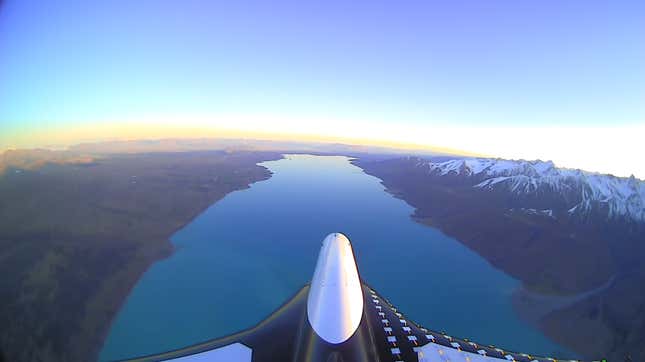
Dawn Aerospace CEO Stefan Powell announced today that the company’s Mk-II Aurora spaceplane has received approval from the Civil Aviation Authority of New Zealand for rocket-powered flight. The company is now ready to test the vehicle’s rocket engines with flights beginning next month.
The Mk-II Aurora is a remotely piloted spaceplane that could eventually take two trips into space every day. During testing, the Mk-II will host research projects and collect scientific data with its onboard 3U payload capacity (i.e. 30 cubic centimeters in size) while serving as a proof of concept for a later model—the Mk-III—that could deliver 550-pound (250-kilogram) satellites into orbit with the help of a second stage rocket (the concept is somewhat similar to how Virgin Orbit uses piloted aircraft to deploy its LauncherOne rocket).
With approval from New Zealand’s Civil Aviation Authority, Dawn Aerospace is readying to begin rocket-powered flight tests of the Mk-II Aurora beginning in just a few weeks. The company has already fired the Aurora’s rocket engine—112 times according to Powell in a press release—but never has it conducted a flight test with the engine, opting to flight test 48 times with jet engines instead.
“Certification as an aircraft is a crucial step towards our mission, as it allows us to operate without excluding other airspace users,” Powell wrote in the press release. “This enables us to integrate with existing airspace and fly as frequently as the vehicle permits, rather than as often as we can clear the airspace.”
While Mk-II Aurora is a proof of concept for the Mk-III, the spaceplane’s journey into space is still incredibly useful. More specifically, Mk-II will perform Earth monitoring, microgravity research, disaster management, and atmospheric science, which could help make climate and weather models more robust. Powell said in the press release that tests of the Mk-II Aurora will follow a “build-up approach,” as previous testing has, in which the plane will reach “modest” altitudes and speeds to demonstrate that rocket-powered flight is just as viable as commercial aircraft.

The altitude the Aurora will reach in these upcoming tests isn’t necessarily modest, as company plans to reach the internationally recognized boundary of space, better known as the Karman line. As SatNews reported last September, Dawn Aerospace is gearing up for Phase 2 of testing the Aurora, which according to its company’s website, will see the company push Aurora to higher and higher altitudes over a series of tests until it crosses the Karman line, which is about 62 miles (100 kilometers) above the Earth’s surface.
For more spaceflight in your life, follow us on Twitter and bookmark Gizmodo’s dedicated Spaceflight page.